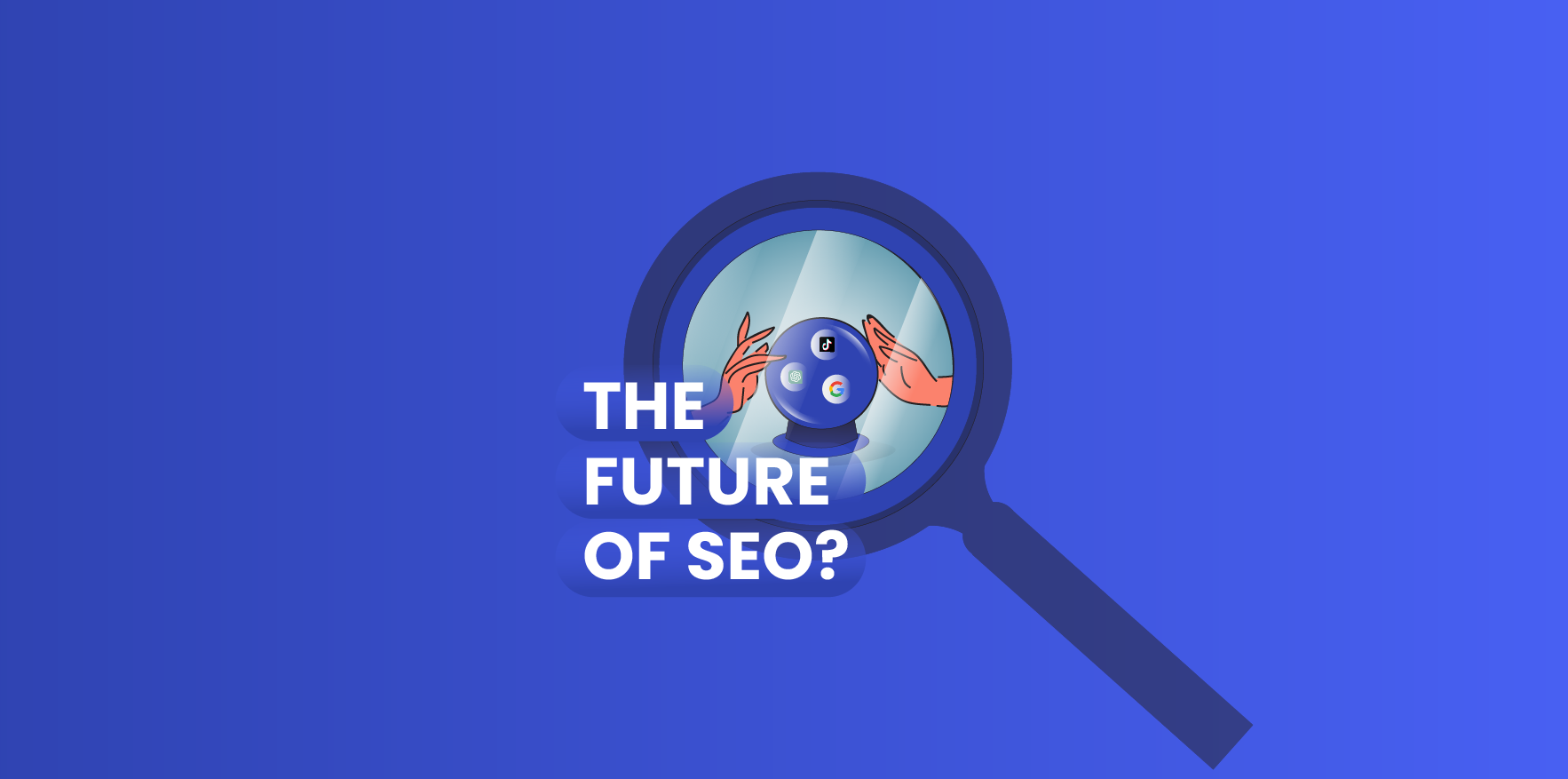
Technology
How NOT to use ChatGPT: Our 5 Top Tips
Growth Insights
AI

Alex Coupe
Jul 18, 2023
ChatGPT is changing the world. It4s an incredibly powerful and incredibly handy tool… if you know how to use it properly.
At first glance, it may seem simple - type in your query and receive a rapid, human-like response. But the truth is, there's a lot more to it than that.
Most people aren't maximizing the potential of the chatbot. When we first started using ChatGPT, we too were struggling to get the substantial, useful responses we wanted - but with practice, we've learned how to get the best out of the technology.
Don't get us wrong, ChatGPT isn't perfect, and we're sure we're still not using it to its full potential - but it's rapidly becoming our work best friend.
Learning how NOT to use ChatGPT is a crucial step to getting the most out of the AI model. Once you get it working properly, you'll wonder how you ever managed without it.
That's why we've put together a list of common mistakes people make when using ChatGPT, along with tips to help you avoid them.
#1: Don't be broad or vague:
Mistake: Asking basic questions and expecting detailed responses
Almost every ChatGPT user makes this mistake when they start using the tool - we're guilty too! ChatGPT responses are only as good as the queries that generate them. Asking broad, unspecific questions will generate broad, nonspecific responses and may fail to match your intent.
It's natural to be cautious and tentative when first using AI, but it's important that you understand the power of the tools and are not afraid to for highly-specific information and detail.
ChatGPT is trained on a vast amount of qualitative data, so its pool of reference when answering a query is incredibly broad - when you give it a prompt, it is filtering through everything it has learned to try to provide a response that answers that prompt as accurately as possible.
Solution: Be precise and clear in your prompts
When you're giving a prompt, try to think about background information, context, and intent - give the bot clear points of reference: time periods, specific events, or the reason for your prompt, for example. These all help the bot narrow down its pool of reference and improves the relevancy of the resultant response.
Clarity is also key here - try to keep your prompt as comprehensible and easy to understand as possible. It should be obvious what you want the bot to tell you.
Instead of "Tell me about technology in the marketing industry", try something like "I am writing a blog article about technology in the digital marketing industry. Tell me about how technological developments have changed the marketing industry over the past 15 years."

Top tip:
Don't be afraid to get into a conversation - ask follow-up questions or tell it what it's done wrong. One of the most amazing things about chatGPT is its ability to adapt its responses based on your feed.
If you like parts of ChatGPT's response, but not others, ask it to elaborate on the parts you like and want more information about. ChatGPT will progressively alter and improve the relevancy of its responses - but it can only do this if you tell it what's relevant or appropriate and what isn't.
#2: Know its limits:
Mistake: Relying on ChatGPT to provide detailed answers on everything, specifically information from 2022 and beyond

Whilst ChatGPT is impressively intelligent and has an incredibly broad knowledge base - it can give you insights and information on almost any topic under the sun. But as powerful as ChatGPT is, there are still some things it simply doesn't know.
ChatGPT's biggest strength is also one of its biggest pitfalls: it can only tell you what it knows, i.e. the data it has been trained on. The knowledge cutoff for ChatGPT is September 2021, which means that it has not been trained on information from beyond that point.
While it may be able to provide some information on recent developments, there's always a risk that the information it provides may be inaccurate or incomplete.
For example, if you were to ask ChatGPT about Google's new Bard chatbot, it wouldn't be able to provide any information on the topic, despite it being a highly notable venture in the field of chatbot development and technology generally.
Furthermore, information on highly specific topics, concepts, companies, or products may also be hard to come by due to the limits of ChatGPT's knowledge base.
Solution: Use a variety of sources and avoid making jargon-filled queries
ChatGPT is a humble bot - it will tell you itself that it should be used for "general knowledge and insights" and may have "limitations or inaccuracies" when attempting to provide "highly specific or up-to-date information".
As a result, it's important that users remember to consult other sources such as academic journals or reliable news outlets to fill in the gaps left by ChatGPT. ChatGPT should never be your sole source of knowledge and information - keeping a diffuse knowledge base is key.
Furthermore, ChatGPT is not a substitute for human experience, so you should continue to refer to experts and specialized publications for more nuanced or field-specific guidance.
Utilizing an array of sources is crucial - but you can also help yourself out by using prompts that don't contain extensive jargon or don't require information from September 2021 onwards. This leads us nicely to our third piece of advice.
#3: Fact Check
Mistake: Taking everything ChatGPT says at face value

This is another common mistake - as humble as it is, ChatGPT responds to prompts with confidence. As a result, it's easy to take what it says for granted.
It's important to remember, however, that the bot's responses are based solely on the data input into it. Inaccuracies or falsities in this data might well be perpetuated in ChatGPT's responses. In fact, lots of content circulating on social media shows ChatGPT generating inaccurate results to relatively straightforward queries.
It can't always be trusted.
Fast Company editor, Harry McCracken, asked ChatGPT: "What was the first TV cartoon?". The first time it was asked, ChatGPT confidently responded "The Flintstones", the second time, it suggested "The New Adventures of Pinnochio", and the third time, it claimed that "The Adventures of Peg O' The Ring" was the first cartoon to hit the screens.
ChatGPT clearly wasn't sure of the answer, but it didn't tell the user that. This is a very specific example, but it isn't a one-off: many users have found similar inconsistencies in their query responses.
This being said, as a learning technology, it improves based on its mistakes. As a result, most of the laughable responses to queries shared online by big publications, or your average Twitter user, have been cleaned up and improved.
For those of you wondering, ChatGPT will now tell you that 1949's "Crusader Rabbit" was the first cartoon on TV - what a relief!
Solution: Fact-check it! Use multiple sources - ChatGPT shouldn't be your only source of information or content.
Once again, consulting other sources will ensure the content is accurate, but might also give you new ideas and points of view.
Don't forget what content writing was like BEFORE ChatGPT! Don't take ChatGPT's answers at face value or simply cut and paste responses into your copy without making sure it's true.
Think of ChatGPT as a source of ideas, rather than a source of facts. Whilst most of the information it gives you will be accurate and factual, this is not always the case. Try to hit Google before you hit publish.
#4: Tell it who you want it to be

Mistake: Not making the most of ChatGPT's ability to take on different points of view, voices, or tones.
With the advancements in natural language processing, we've reached a point where chatbots can do much more than respond to our basic queries or direct us to a relevant webpage.
We've come a long way. ChatGPT can not only talk (or rather write) in the voice or style you desire, but it can also adopt entire points of view in its responses.
There are countless uses for ChatGPT's complex voice- and tone-changing abilities, and if you're not using them properly, you're missing out.
Solution: In content writing, explore different voices or tones to match your content's audience and aims.
If you're writing an informal blog article, ask ChatGPT to present its responses in an engaging or fun way; if you're writing a step-by-step guide, ask for something structured and informative. Whether or not you use the responses it provides, asking for responses in a certain tone can give you plenty of ideas as to how to make your content more interesting, more exciting, or more clear.
In research of proof-reading/editing
Be sure to utilize ChatGPT as a proofreading tool. Again, depending upon your audience or aims, you can ask it to take on the role of a certain individual, be that a college professor, a CEO, or a moody teenager (I asked ChatGPT to proof-read this article from the POV of a marketing expert, and it gave me some pretty useful feedback!)
#5: ChatGPT is not your content strategy, it�s PART of your content strategy
Mistake: Relying too heavily on ChatGPT for content production
ChatGPT is here to help you: it's here to make life easier. It's easy to forget to optimize the content it generates for SEO purposes and use the raw-generated content.
The raw content generated by AI models like ChatGPT can be a great starting point for content creation, and whilst ChatGPT will include the keywords included in your prompt, and often formats its responses with subheadings, it needs to be edited and optimized for search engines to ensure maximum visibility and traffic.
To make this matter even more important, AI detection tools are emerging at an increasing rate, meaning that your chatGPT content might struggle to rank highly on search engines in the future.
Google has made it pretty clear that AI-generated content IS permissible on the search engine and has the potential to rank, but only if that content is genuinely written to help people and not solely to rank.
Hence, it's crucial that content is curated with a nuanced human touch, and all AI content is fact-checked and edited with a focus on genuinely helping search users.
Solution: Use ChatGPT to enhance your writing rather than replace it
As we've spoken about in a previous article, adapting to the rise of AI and learning how to effectively utilize AI-produced content is key to the future prosperity of digital marketers.
ChatGPT shouldn't replace content writing, but make it more efficient - the human touch will always give content the edge, so don't forget what copywriting was like before "The Rise of AI."
Use ChatGPT as a source of information and ideas, and integrate it into your content strategy, but don't let it become your entire content strategy.
Curation is key - ensure the generated content has good structure, is easy to read, contains the relevant keywords, and is back-linked to other relevant content. Also, don't forget to use ChatGPT to help create effective meta descriptions and title tags which can help improve your SERP rankings.
Beyond meta descriptions, ChatGPT can be used to improve the SEO of your content. In another upcoming article, we'll take a closer look at how ChatGPT can assist and optimize your SEO writing.

Join the talk!
Stay on top of digital marketing innovation thanks to the insights from our internal Slack.
We post everyday!


